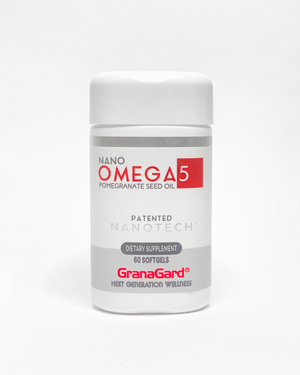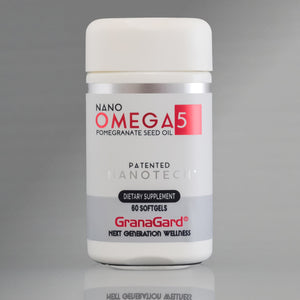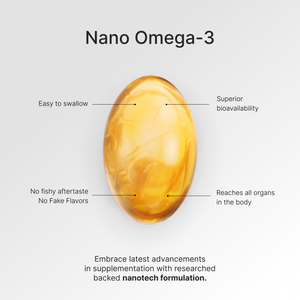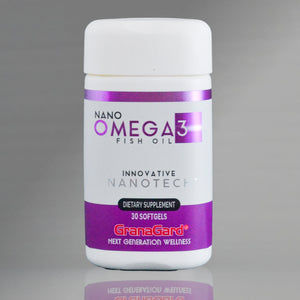Each year, health and mortality statistics are swelled by new cases of cardiovascular diseases, neurodegenerative diseases, diabetes, joint diseases, and an extensive list of others. All of them share a common predisposing factor… Oxidative stress.
What is Oxidative Stress
The normal metabolism of our body, that is, the process by which the food we eat is transformed into the energy we need to breathe, move, think, and for our heart to beat… produces as “waste materials” from these reactions elements known as free radicals and reactive oxygen species (ROS).
These “waste materials,” free radicals and ROS, are “cleaned” and neutralized by our internal antioxidant system. Normally, the production of free radicals and the antioxidant (What are antioxidants in simple words) system should remain balanced. When this balance is broken and oxidizing agents prevail, we are in the presence of Oxidative Stress.
What damage does oxidative stress cause

Free radicals and ROS have a high power to oxidize other molecules, that is, to take an electron from them, destabilizing them. They can act on proteins such as some hormones or cellular receptors, on lipids that make up cell membranes, and even on DNA itself, leading to mutations.
When these molecules are oxidized, their structure and therefore their function are altered. This cumulative damage to cells will lead to malfunctioning of that cell (if it produced a hormone, it will not produce it or it will be altered with a deficient function).
Why are so many diseases related to oxidative stress
All the cells in our body have aerobic metabolism, that is, they depend on the presence of oxygen to perform it and produce energy. This occurs in all the organs of our body, that is, all are exposed to the attack of free radicals and therefore to oxidative stress.
The more cells are affected by oxidative stress in a specific organ, the greater the alteration in that organ or tissue, and diseases will begin to appear. For example, if the damage is to the vascular endothelium, (Benefits of Omega 3 for cardiovascular health) the cell layer that lines the inside of the arteries, hypertension or atherosclerosis could begin; if it is at the level of the pancreas, it could be diabetes; in the brain: Alzheimer’s or Parkinson’s.
All organs are threatened by oxidative stress, and it will depend on individual susceptibilities that it manifests more in one or another. For example, two unrelated people, eating the same diet, in similar environments, and subjected to oxidative stress could develop one diabetes and the other Alzheimer’s.
It is a phenomenon similar to what we see in other systemic pathologies, such as diabetes: (Oxidative stress can cause Type 2 diabetes) two patients, having the same blood sugar levels, could develop different complications; one a diabetic retinopathy affecting vision, while the other develops diabetic nephropathy leading to kidney failure, but in both cases, diabetes was the origin of the problem.
Oxidative stress and aging
Aging is a natural and physiological process, but oxidative stress accelerates it greatly. We may have encountered oxidative stress in more everyday and less pathological situations… Many of us have had the opportunity to meet our old high school classmates. With astonishment we find some of them unrecognizable: some because they look much older than the average for the class; others, because they have changed very little from the image they had 25 or 30 years ago. The answer to these differences lies in the oxidative stress that some have endured more than others. Those who endured more oxidative stress will look older.
Why is there not more prevention against oxidative stress

Preventive medicine is the most effective tool to keep us healthy, however, in most cases people do not implement it because they “do not feel anything,” and underestimate the threats.
Vaccination campaigns, especially for children, are among the success stories of preventive medicine. The eradication of smallpox certified by the World Health Organization in 1980 is a good proof of this. Other moderately successful cases have been certain varieties of cancer.
Unfortunately, this does not apply to most diseases, especially if you “do not feel anything.” Hypertension, “the silent killer,” is one of them. People do not go to the doctor to rule it out; it is usually a finding when they attend a medical consultation for another reason. Sometimes, even with something as evident as being overweight and obese, necessary measures are not taken to prevent severe problems such as cardiovascular diseases and diabetes.
A very special mention deserves oxidative stress. There are more than 300,000 publications of research on oxidative stress, pointing it out as an agent related to chronic degenerative diseases such as Alzheimer’s, atherosclerosis, hypertension, diabetes, and a long additional list, and yet many people see it as “an urban myth.”
Oxidative stress is real, the problem is that we do not distinguish it in the early stages; there are no signs or symptoms. We find out about it through the consequences, the diseases it causes some time later.
Verify oxidative stress for yourself
If you are still among the skeptics who think that oxidative stress is overestimated, I invite you to conduct a simple experiment at home… Cut an apple in half and do the same with a lemon. Leave them in your kitchen for 4 to 6 hours side by side, subjected to the same lighting, temperature, ventilation (controlled variables), and of course, both fruits should have an equivalent degree of ripeness.
When you return to check your experiment after the elapsed time, you will see that the apple already shows some deterioration, it is darkening, while the lemon still looks freshly cut. If you let much more time pass, say two or three days, you will notice changes in the lemon, but the apple will be unrecognizable.

To determine the antioxidant capacity of plant foods, the FRAP method (ferric reducing activity power) exists, and its values are recorded in similar time, expressed in millimoles of Fe/100g. The apple has an average value of 0.121 millimoles of Fe/100g, while the lemon has a value of 0.250 millimoles of Fe/100g… twice as much.
The explanation appears before our eyes: the lemon contains more antioxidants than the apple, so it can resist oxidation processes for longer. Evidently, there comes a time when this antioxidant capacity is exhausted and it begins to deteriorate.
Oxidation should not be confused with rotting, in which bacteria and fungi are involved. In theory, if we could stop rotting (to observe only the oxidation phenomenon) and somehow renew the antioxidant capacity of the lemon, it would look fresh much longer.
If you want to continue experimenting, again cut another apple, leave one of the halves natural, and rub the other half with a lemon over all the pulp. Leave them for a while and observe the differences… one half is oxidized, darkened; the other half, which you protected with antioxidants, will be in much better condition.
This, which may seem like a game, is what happens inside our body, with our organs when they do not have antioxidant protection. Of course, it is a longer process, but in the long run, it will cause a disease.
How to protect ourselves against oxidative stress
Most of the time, our internal antioxidant system is insufficient to neutralize all the free radicals and ROS produced during metabolism, hence the importance of consuming a diet rich in antioxidants (What are the best antioxidant foods) that reinforces our internal system. The problem is that we do not always have access to this type of diet. This is where Antioxidant Supplements play a fundamental role in providing us with that protection.
Antioxidant Supplements
An antioxidant supplement is a compound or substance with antioxidant properties that, administered orally in the form of capsules, tablets, or liquid, is capable of reinforcing our internal antioxidant system.
Not all antioxidant supplements are the same; they differ in their mechanism of action, which gives them greater or lesser antioxidant capacity; and in their dissolution properties, as some dissolve in fatty media, while others dissolve in aqueous media.
A Superior Antioxidant Supplement
Omega 5 (Punica Acid) (What are the benefits of Omega 5) is a powerful natural antioxidant extracted from pomegranate seeds. Thanks to nanotechnology (What is Nanotechnology in simple words) from GranaGard®, Omega 5, which is a natural oil, has been transformed into a nanoemulsion, that is, it has been given the ability to dissolve in both fatty and aqueous media.
Furthermore, the powerful antioxidant activity of Omega 5 is exerted through multiple mechanisms of action, as it is capable of direct free radical trapping and also stimulates the production of internal antioxidants.
Considering that all organs are threatened by oxidative stress, that their proportions of fat and water vary, and that some are protected by barriers and membranes that would prevent access to very large molecules but allow those at nanometric scales, the selection of Nano Omega 5 from GranaGard® is the smartest option.
Oxidative stress is not a myth; it is real. Start protecting yourself today with Nano Omega 5 from GranaGard®!





